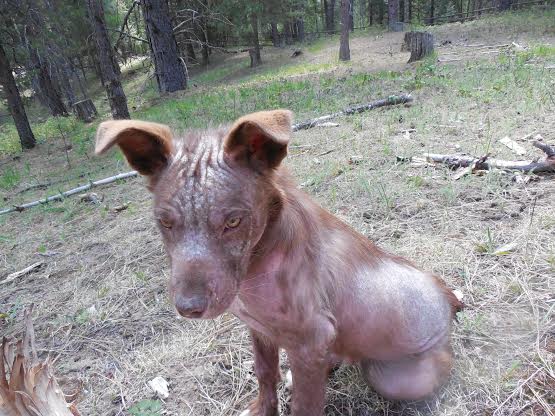See that poor dog on the right? That’s Boone, who I helped treat for demodectic mange while he was in a foster home (which became his forever home, but that’s another story!).
Boone is healthy now, but demodectic mange is a problem that affects a lot of dogs, so I thought you’d want to know more about it.
Demodectic mange is caused by a microscopic mite that can be considered normal skin when present in small numbers. They produce disease when an abnormal or extremely weekend immune system allows unchecked proliferation and leads to patches of hair loss on head, legs and truck that coalesce to form large areas of hair loss.
A high incidence in dogs of the pit bull type suggests that some dogs may have an inherited immune susceptibility.
The hair follicles become plugged with mites and skin scales. A veterinary hospital will do a skin scrap to confirm diagnosis; I usually show the live mites to the pet owner under the microscope and invariably they get really creeped out like watching a real life subterranean horror movie with millions of monsters just under their pet’s skin.
When the mites are present in large numbers, the skin breaks down to form sores, crusts, and draining tracts, which can be debilitating.
Almost bald and with oozing, crusty skin, there are few dogs who look worse on the outside. But when treated, these dogs can make a transformation from ugly caterpillar to beautiful butterfly, just like Boone did.
Treatment can involve benzoyl peroxide shampoo, miticides such as Mitaban, and ivermectin. If you think your dog might have demodectic mange, talk to your veterinarian right away!


